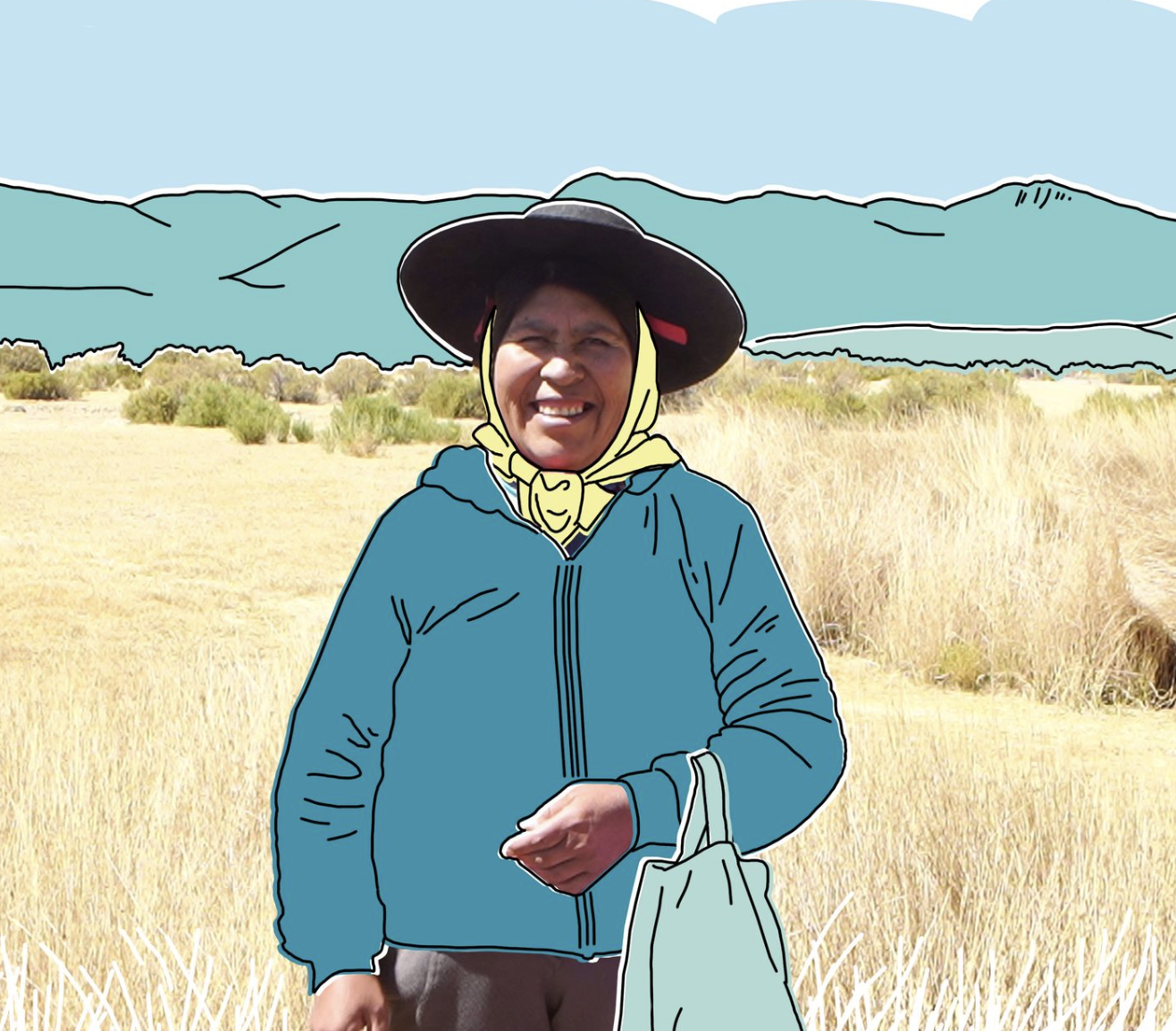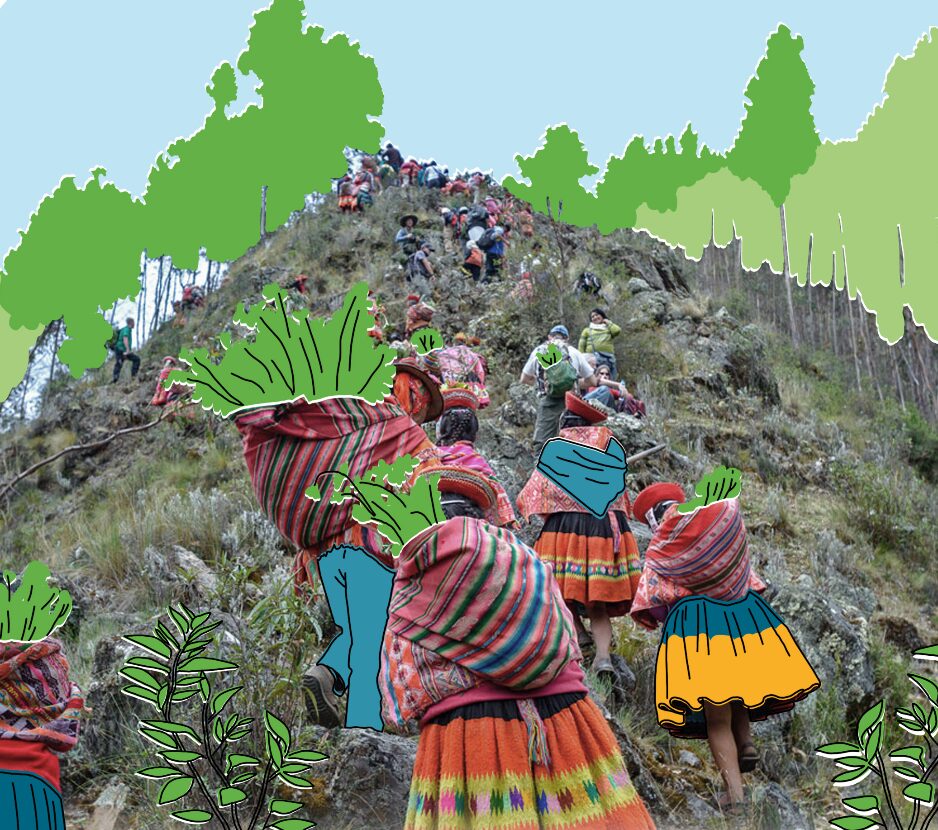Pastoralism in the high tropical Andes: A review of the effect of grazing intensity on plant diversity and ecosystem services

This article is an abridged version of the original text, which can be downloaded from the right-hand column. We highlight some of the paper’s key messages below, but please access the original text for more comprehensive detail, full references, or to quote text.
To cite the original text, please use: Duchicela, S.A., Llambí, L.D., Bonnesoeur, V. & Román-Dañobeytia, F. (2024) Pastoralism in the high tropical Andes: A review of the effect of grazing intensity on plant diversity and ecosystem services. Applied Vegetation Science, 27, e12791. Available from: https://doi.org/10.1111/avsc.12791.
Introduction
Pastoralism is a land-use system that involves the care and use of grazing livestock and has been more common in areas of low resource availability. In this review, the authors analyze the impact of pastoralism on biodiversity and ecosystem services across the tropical Andes. This region is the most extensive and populated tropical mountain region in the world and presents a high diversity of biomes, livestock types and management histories. Given that pastoralism is a main land use here, understanding its impacts is important for providing appropriate recommendations for sustainable management.
To promote conservation, sustainable management and design appropriate adaptation strategies in this naturally and culturally diverse region, it is important to understand the role pastoralism has played and the impacts it has had in these socio-ecological systems. For example, it is unclear how different levels of grazing intensity by native camelids and exotic livestock could differentially affect multiple ecosystem indicators.
The review seeks to analyze the impact of different types of grazing (in terms of the types of animals, grazing intensity, and management strategies) on biodiversity and ecosystem services in the main pastoral systems that have been studied in the tropical Andes. The study addresses the complexities of pastoralist systems across the region by describing their environmental context and prevalent management strategies, using that to analyze their ecosystem impacts. To do this, the authors reviewed peer-reviewed publications to evaluate the main pastoral systems in the region and systematically recorded the types and effects of different levels of grazing intensity.
Method
To understand the impacts of pastoralism, the authors performed a systematic literature search (August 2021) and obtained 103 articles. The systematic review considered four main aspects:
- a description of the most common and most investigated pastoral systems in the tropical Andes;
- these studies’ research methods;
- whether grazing pressure evaluations were included and if so, which ones; and
- the indicators of biodiversity and ecosystem services impacted and the metrics used to measure them.
Using their review criteria (see original paper for more detail), the authors obtained a total of 243 articles, 103 that contained potential comparable data on the characteristics of pastoral systems and their grazing impacts, and a separate 141 articles that could be used to describe the regional context.
A conceptual framework was created to map how available research has contributed to the study’s understanding of the main pastoral systems, their associated management strategies and the impact of different grazing intensities on vegetation cover/diversity and ecosystem services.

Lessons Learned
- Research has focused on two leading pastoral systems in the region: bovines in the páramo biome of the northern Andes and camelids in the puna biome of the central Andes.
- There were important environmental impacts at high grazing intensities for both the puna camelid and páramo bovine pastoral systems, including a decrease in soil organic carbon and an increase in soil compaction, a decrease in above-ground biomass, plant species richness, and graminoid cover, as well as clear changes in the growth-form composition of vegetation.
- The results indicate that low grazing levels can be compatible with maintaining both biodiversity and key ecosystem services while sustaining pastoralist systems, which can play diverse roles in the local/regional economy.
- In the case of the páramo, especially when grazing by exotic bovines occurs within protected areas, there is a need to critically evaluate the role that this productive activity plays in the rural socioeconomic and cultural context vis-à-vis its ecological impacts (e.g., the regulation of water provision for agriculture and human consumption), and to explore sustainable management alternatives and their effectiveness (e.g., management of grazing pressures through fencing and rotation, cattle exclusion from critical areas such as wetlands, genetic improvement of animal herds, pasture management).
Explore the review’s findings in more detail as well as recommendations for future research by downloading the paper on the right-hand side.
Suggested Citation:
Duchicela, S.A., Llambí, L.D., Bonnesoeur, V. & Román-Dañobeytia, F. (2024) Pastoralism in the high tropical Andes: A review of the effect of grazing intensity on plant diversity and ecosystem services. Applied Vegetation Science, 27, e12791. Available from: https://doi.org/10.1111/avsc.12791






Comments
There is no content